Living off the grid isn’t just about growing your own food and harvesting rainwater. It’s also about understanding the wild creatures that share our land. I’ve spent many nights under the stars, and let me tell you, there’s nothing like the sound of a coyote howl to remind you that you’re not alone out there. From the icy tundra of Alaska to the steamy swamps of Florida, North America is home to some truly impressive predators. Whether you’re homesteading in bear country or just taking a weekend hike, knowing about these animals could save your life. Remember, respect for these creatures and their habitats is key to coexisting safely in the wilderness.
Grizzly Bear

Grizzlies are the stuff of legend, and for good reason. These massive bears can weigh up to 1,500 pounds and stand 8 feet tall on their hind legs. They’re found mainly in Alaska, western Canada, and parts of the northwestern United States. Despite their size, grizzlies can run at speeds up to 35 mph. Their strength is truly awe-inspiring, with reports of them flipping 700-pound dumpsters. If you’re in grizzly country, always carry bear spray and know how to use it properly.
Mountain Lion

Also known as cougars or pumas, mountain lions are found across western North America and Florida. These big cats can leap 40 feet horizontally and 15 feet vertically, making them incredibly agile predators. They’re generally solitary and elusive, but attacks on humans do occur, especially in areas where their habitat overlaps with human settlements. Always keep an eye out for their distinctive tracks when in cougar country. If you encounter a mountain lion, stand your ground, make yourself look big, and never run away.
Gray Wolf
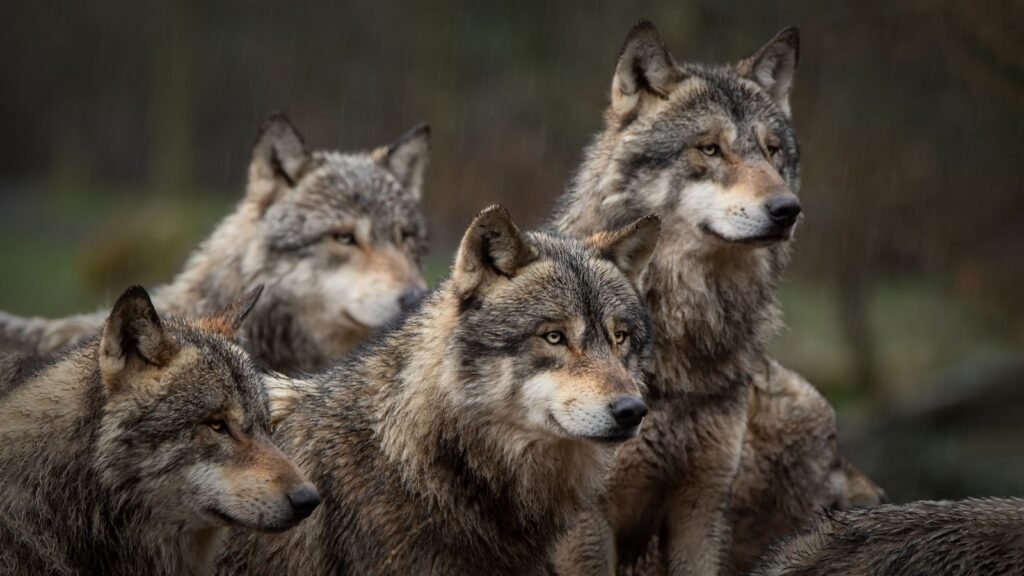
Once nearly extinct in the lower 48 states, gray wolves have made a comeback in recent years. These pack hunters can weigh up to 175 pounds and are found in parts of the Rocky Mountains, Great Lakes region, and Alaska. While wolf attacks on humans are rare, they can be dangerous to livestock and pets. Their haunting howls are a reminder that you’re not at the top of the food chain in wolf territory. Wolves are so important in maintaining ecosystem balance, so it’s important to learn to coexist with them.
American Alligator

Found in the southeastern United States, American alligators can grow up to 14 feet long and weigh over 1,000 pounds. They’re ambush predators, often lying in wait just below the water’s surface. While alligators generally avoid humans, they can be extremely dangerous if provoked or if they mistake a person for prey. Their camouflage is incredible, making them hard to spot in murky waters. Never feed alligators, as this can cause them to associate humans with food, leading to dangerous encounters.
Black Bear

Don’t let the name fool you – black bears can be brown, cinnamon, or even white. They’re found in forested areas across much of North America. While generally less aggressive than grizzlies, black bears are more numerous and account for more human-bear conflicts. They’re incredibly smart and can figure out complex locks and latches, making proper food storage essential in bear country. Black bears are excellent climbers, so if you encounter one, don’t try to escape up a tree.
Coyote
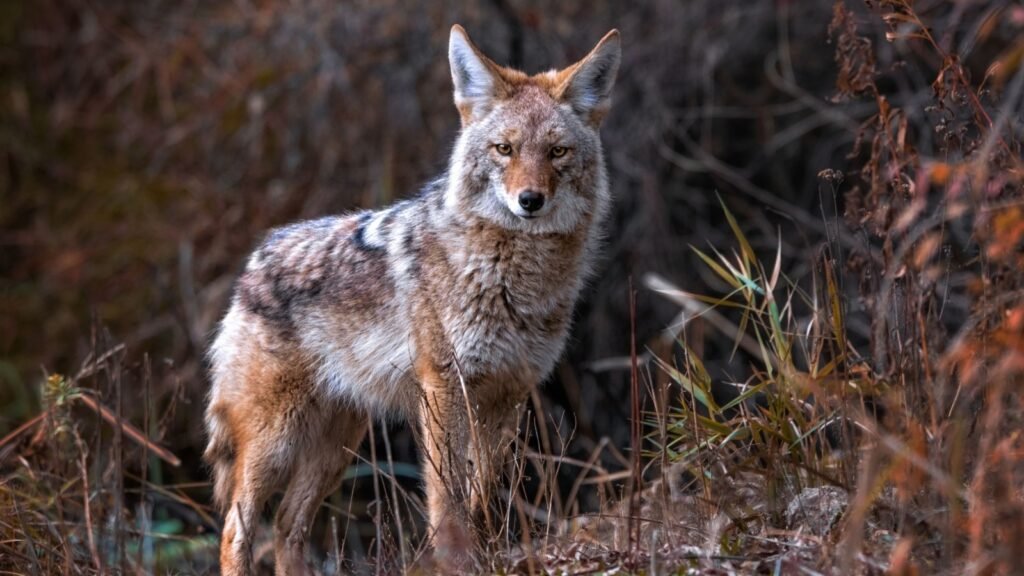
Coyotes have adapted well to human expansion and can be found across North America, even in urban areas. While attacks on humans are rare, they can be a significant threat to small pets and livestock. Coyotes are incredibly intelligent and have learned to work in teams to take down larger prey. Their hunting strategies are truly impressive. To deter coyotes, make your property less attractive by securing trash and pet food, and never feed them intentionally.
Bobcat

These medium-sized wildcats are found across much of North America. While they typically avoid humans, bobcats can be fierce when cornered or protecting their young. They’re excellent climbers and swimmers, making them versatile predators. Bobcats play an important role in controlling rodent populations, so their presence can actually be beneficial for homesteaders and farmers.
Great Horned Owl
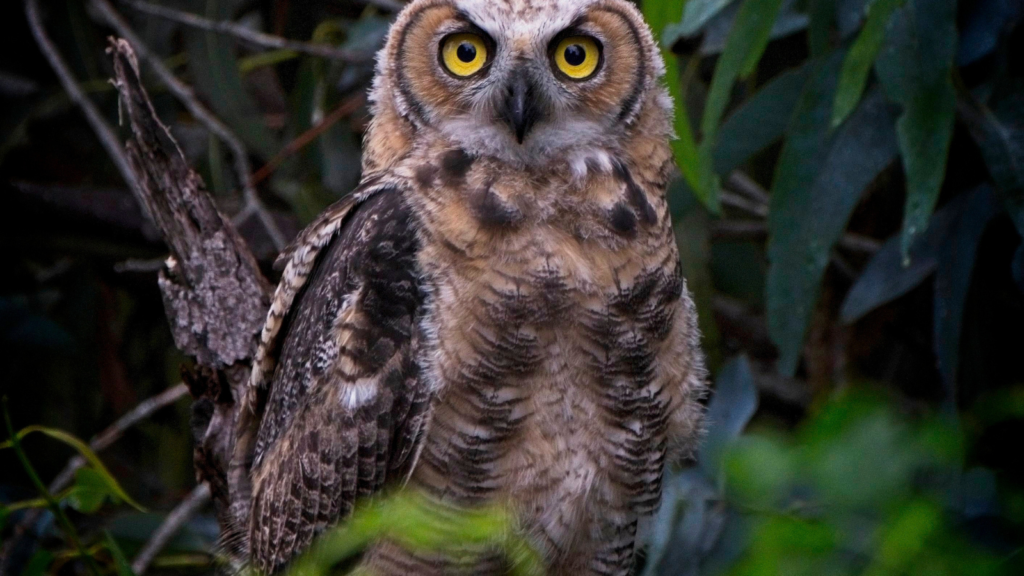
Don’t underestimate these nocturnal hunters. Great horned owls have a wingspan of up to 5 feet and can take down prey much larger than themselves, including other raptors. Their silent flight and powerful talons make them formidable predators. These owls have been known to attack people who get too close to their nests, so always give them plenty of space during breeding season.
Polar Bear

The largest land carnivore in North America, polar bears are found in the Arctic regions of Alaska and Canada. They can weigh up to 1,600 pounds and are excellent swimmers, capable of covering vast distances in icy waters. Unlike other bears, polar bears are almost exclusively meat-eaters and have been known to actively hunt humans. Their white fur provides perfect camouflage in their snowy habitat, making them especially dangerous. Climate change is significantly impacting polar bear populations, forcing them to range farther for food and increasing the likelihood of human encounters.
Wolverine

Pound for pound, the wolverine might be the toughest animal in North America. These muscular members of the weasel family weigh up to 55 pounds and are found in remote northern forests and tundra. They’ve been known to drive much larger predators away from kills and can take down prey many times their size. Their powerful jaws and sharp claws make them a force to be reckoned with. Wolverines have an incredible sense of smell and can detect carrion buried under 20 feet of snow.
Bald Eagle
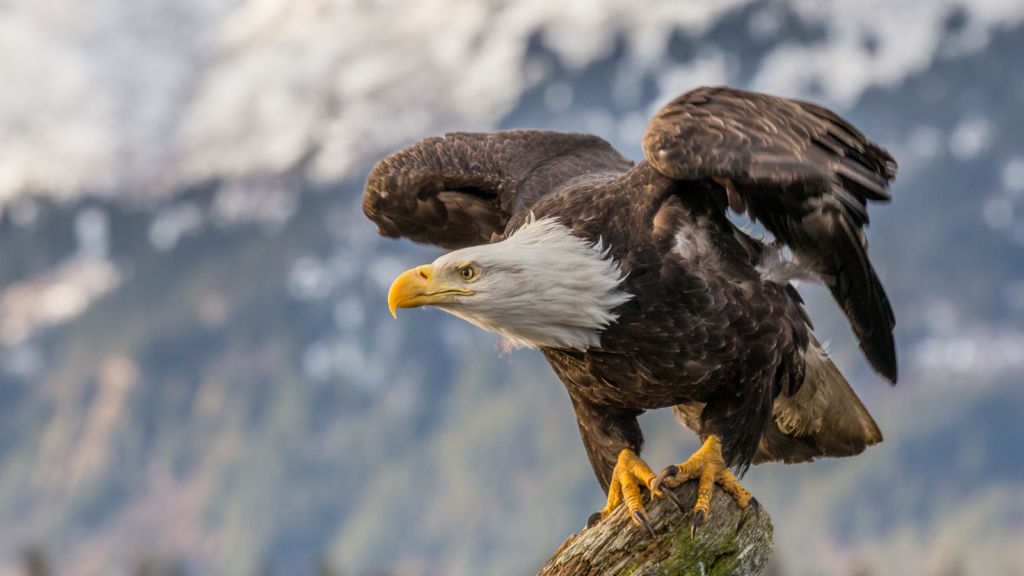
Our national bird is a fierce predator. With a wingspan of up to 7.5 feet, bald eagles can dive at speeds over 100 mph to catch fish. They’re also known to attack small mammals and other birds. While they don’t pose a direct threat to humans, their precision and power are incredible. Bald eagles have made a remarkable recovery from near-extinction and are now found in every U.S. state except Hawaii.
American Crocodile
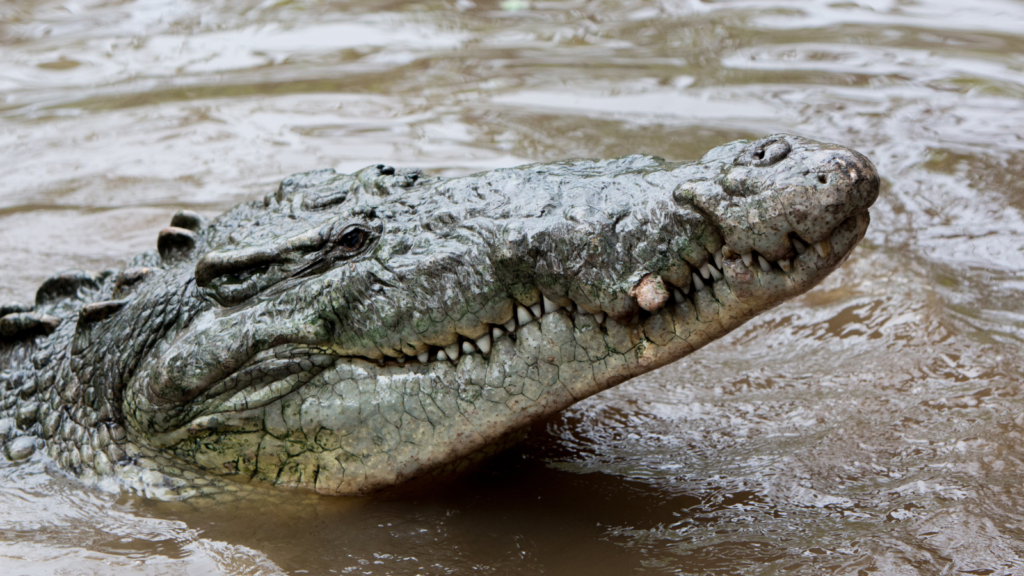
Found in southern Florida, American crocodiles can grow up to 20 feet long. They’re more aggressive than their alligator cousins and are excellent swimmers, even venturing into saltwater. While attacks on humans are rare, they do happen. Always be extra cautious around water in crocodile territory – these prehistoric predators are not to be underestimated. Unlike alligators, crocodiles can’t survive in cold temperatures, which limits their range in North America.
Red-Tailed Hawk

One of the most common raptors in North America, red-tailed hawks have a wingspan of up to 4.5 feet. They’re known for their distinctive screech and can dive at speeds up to 120 mph to catch prey. While they’re not a threat to humans, their hunting skills are truly impressive. These adaptable birds can be found in a variety of habitats, from deserts to urban areas, making them one of the most widespread predators in North America.
Canada Lynx
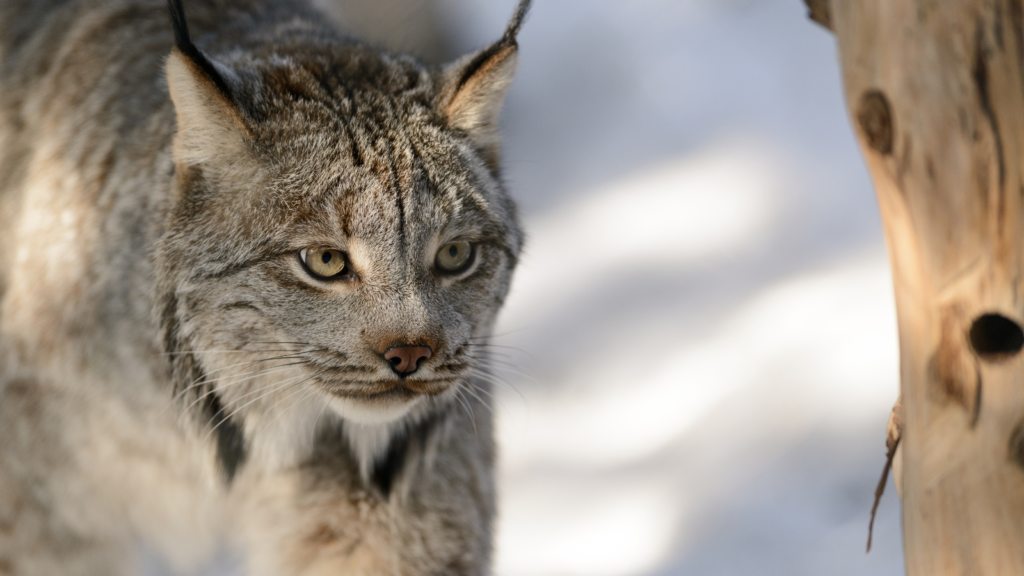
These medium-sized wildcats are found in northern forests across North America. While they generally avoid humans, lynx can be dangerous if cornered or if their kittens are threatened. Their large paws act like snowshoes, allowing them to hunt effectively in deep snow. The Canada lynx’s population is closely tied to that of its primary prey, the snowshoe hare, with both species going through cyclical booms and busts.
American Badger

Badgers are found across much of western and central North America. They’re known for their aggressive nature and powerful claws, which they use for digging and defense. While they’ll usually try to escape rather than confront humans, they can inflict serious injuries if cornered. Badgers play an important role in ecosystem health by aerating soil and controlling rodent populations.
Golden Eagle

Larger than bald eagles, golden eagles have a wingspan of up to 7.5 feet and can dive at speeds over 150 mph. They’re known to take down large prey like deer and are found across western North America. While attacks on humans are extremely rare, their strength is astounding. These birds have been known to use tools, dropping rocks on prey to disable them.
Snapping Turtle

Found in freshwater habitats across eastern and central North America, snapping turtles can weigh up to 75 pounds. Their powerful jaws can easily remove fingers, so caution is crucial when handling them. Despite their fearsome reputation, snapping turtles play an important role in aquatic ecosystems by scavenging dead animals and controlling fish populations.
River Otter

Otters might look cute, but they can be aggressive, especially if they feel their young are threatened. Their sharp teeth and claws can inflict serious wounds. River otters are found near water sources across much of North America. Otters are incredibly playful and have been observed sliding down muddy or snowy banks purely for fun.
Fisher

A member of the weasel family, fishers are found in northern forests across North America. They’re known for their ability to prey on porcupines and are one of the few animals that can successfully hunt these spiny rodents. While they generally avoid humans, fishers can be fierce if cornered. Fishers have been successfully reintroduced to many areas where they were once extirpated, helping to control porcupine populations.
Peregrine Falcon

The fastest animal on Earth, peregrine falcons can dive at speeds over 240 mph. They’re found across North America and are known for their precision hunting of other birds. While they’re not a threat to humans, their aerial hunting skills are truly impressive. Peregrine falcons have made a remarkable recovery from near-extinction due to DDT poisoning and are now common in many urban areas.
American Mink

These semi-aquatic predators are found near water sources across much of North America. While small, mink are fierce hunters and can take down prey much larger than themselves. Their sleek bodies allow them to swim efficiently and pursue prey both in and out of water. Mink have excellent vision both above and below water, making them formidable hunters in aquatic environments.
Gila Monster

One of only two venomous lizards in the world, Gila monsters are found in the southwestern United States. While their venom is not typically fatal to humans, it can cause intense pain and illness. These slow-moving lizards have a surprisingly powerful bite that they’re reluctant to release. Always give these colorful creatures a wide berth when hiking in the desert. Gila monsters can store fat in their tails, allowing them to go months without eating.
Short-Tailed Weasel (Ermine)
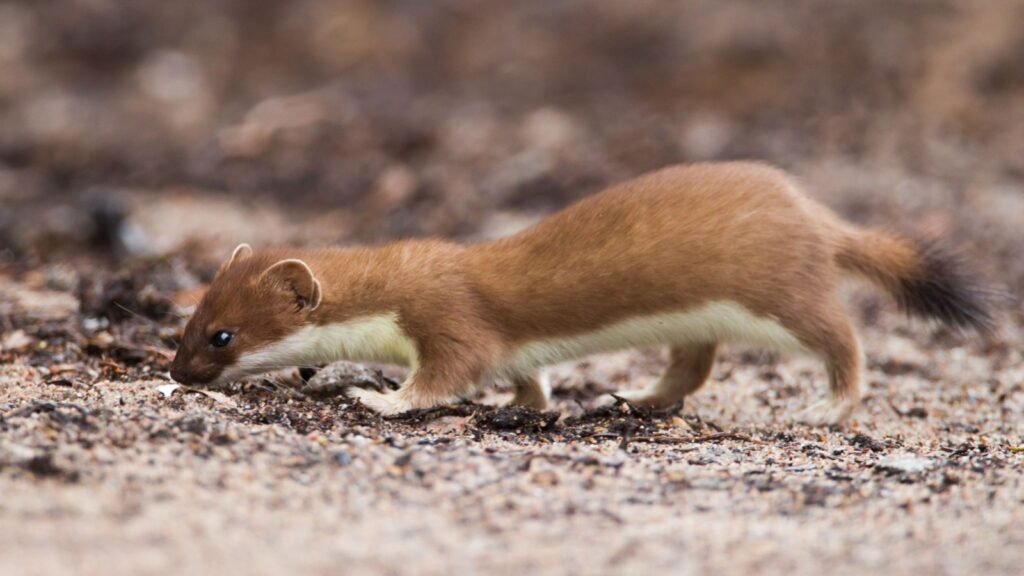
Don’t let their small size fool you – ermines are fierce predators. Found across northern North America, these weasels can take down prey much larger than themselves. In winter, their coat turns white, providing excellent camouflage in snowy environments. Ermines have been known to kill prey up to ten times their own weight.
Great White Shark

While not typically found close to shore, great white sharks do inhabit the coastal waters of North America. These massive predators can grow up to 20 feet long and are known for their powerful bite force. While attacks on humans are rare, they do occur. Always be aware of your surroundings when swimming in the ocean – respect for these apex predators is crucial. Great whites can detect a single drop of blood in 25 gallons of water and can sense tiny electrical impulses from their prey’s muscles. This remarkable sensory ability makes them incredibly efficient hunters in their marine environment.

